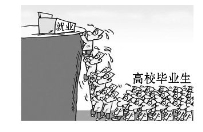题目内容
is some doubt Tom will come to see me this weekend as usual.
A. It; that B. It; whether
C. There; that D. There; whether
D
【解析】There is some/no doubt. . . 为固定句型; doubt用于肯定句时后跟同位语从句不能用that引导, 应用whether引导。所以选D。

练习册系列答案
 阅读快车系列答案
阅读快车系列答案
相关题目

